On another day, with another concept and a random name based on the CosmosSDK, we have TheGreatName Network (by CosmosSDK or something like this).
In the programming community, we often joke about this, but it’s usually about JavaScript libraries:
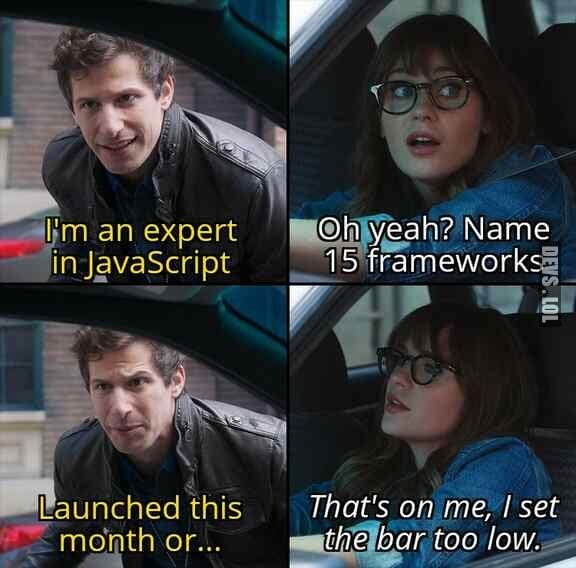
Just like with JavaScript libraries, every day in the Web3 world, we are overwhelmed with information about new blockchains being launched. There are so many that even the analysis content about current blockchains has become boring in the eyes of crypto researchers. From 2018 and earlier, launching a layer 1 blockchain was a very big and “magical” event because it was really hard, massive, and consumed a lot of resources. But today, the emergence of blockchain Software Development Kits (SDKs) like Cosmos SDK, Substrate SDK, OP Stack, etc., has made programming a blockchain easier (although it is still quite complex).
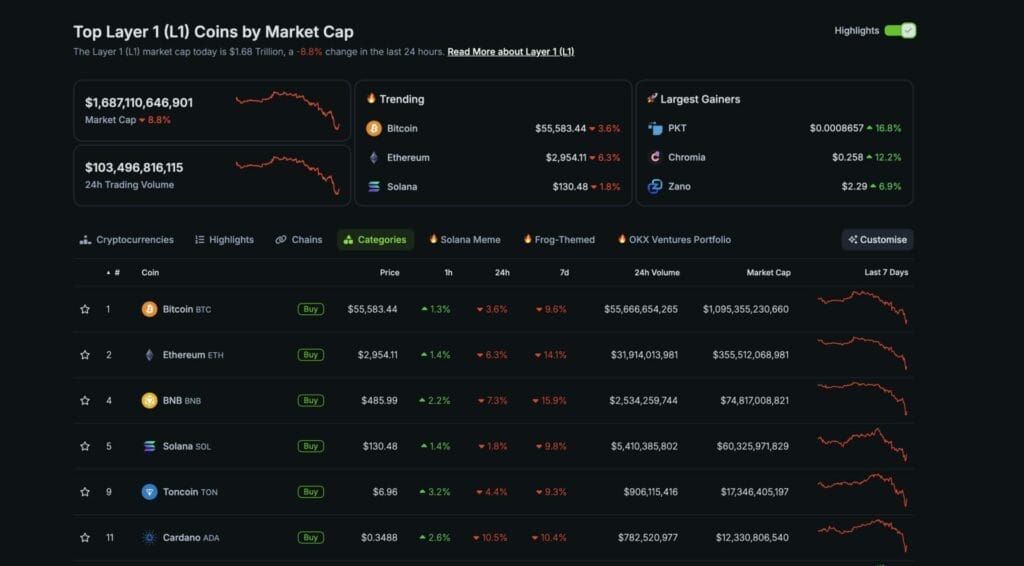
With the current number of layer 1 blockchains being very high, I believe that at least more than 20 blockchains will be released this year (both in testnet and mainnet). So the question is, what is different about them, and why are there so many blockchains? What problem are they solving, or are they all solving the same problem but with different logos?
First, let me introduce myself. I am Spir, the CTO at OriginStake and a long-time researcher in the crypto industry (though I am introverted and lazy to write). We are active in the Validator field and have started paying attention to Initia at a fairly early stage. I also want to share some of my thoughts on this “new generation” blockchain and why OriginStake is getting involved in Initia as a Validator and a Intern Community Builder.
What do you need from a Blockchain?
Most people need money! That’s for sure. However, to get money, we also need to choose the right civilization. I often ask myself this question to decide which blockchain to linger on instead of splitting money into 140 parts and spreading it across all current layer 1 blockchains, lol.
A few bullet points:
- Advanced, transparent technology
- Large, vibrant, and active community
- Backed by big investment funds
- Founders & Foundation team with vision, correct direction, and respect for the voters
- Beautiful logo, website, and wallet (trust me, you’ll be more inspired with a beautiful blockchain)
Here we are 👀
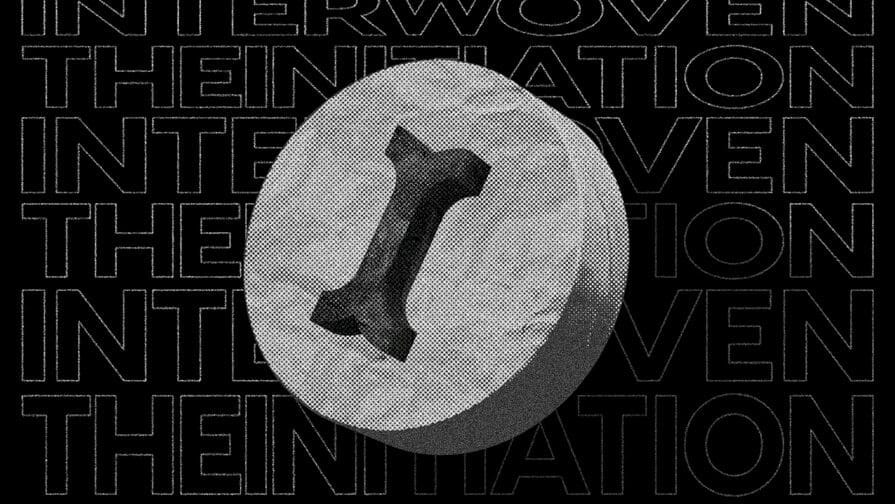
Honestly, users don’t care too much about the technology that a blockchain uses, except for nerds like us IT folks. What they want is a beautiful & smooth product with a seamless experience throughout its use. The technical barriers and learning curve should be as easy as possible. What I want is for money transfers, staking, and NFT management to be really easy and fast, just like using a bank account, but it must meet the stringent technical criteria of a blockchain (sorry, I am a bit of a double standard 😁). From these requirements, I have distilled two basic and most important criteria:
- Good technology
- User experience
Let’s start with the most basic workings of Initia.
The Basic Architecture of Initia
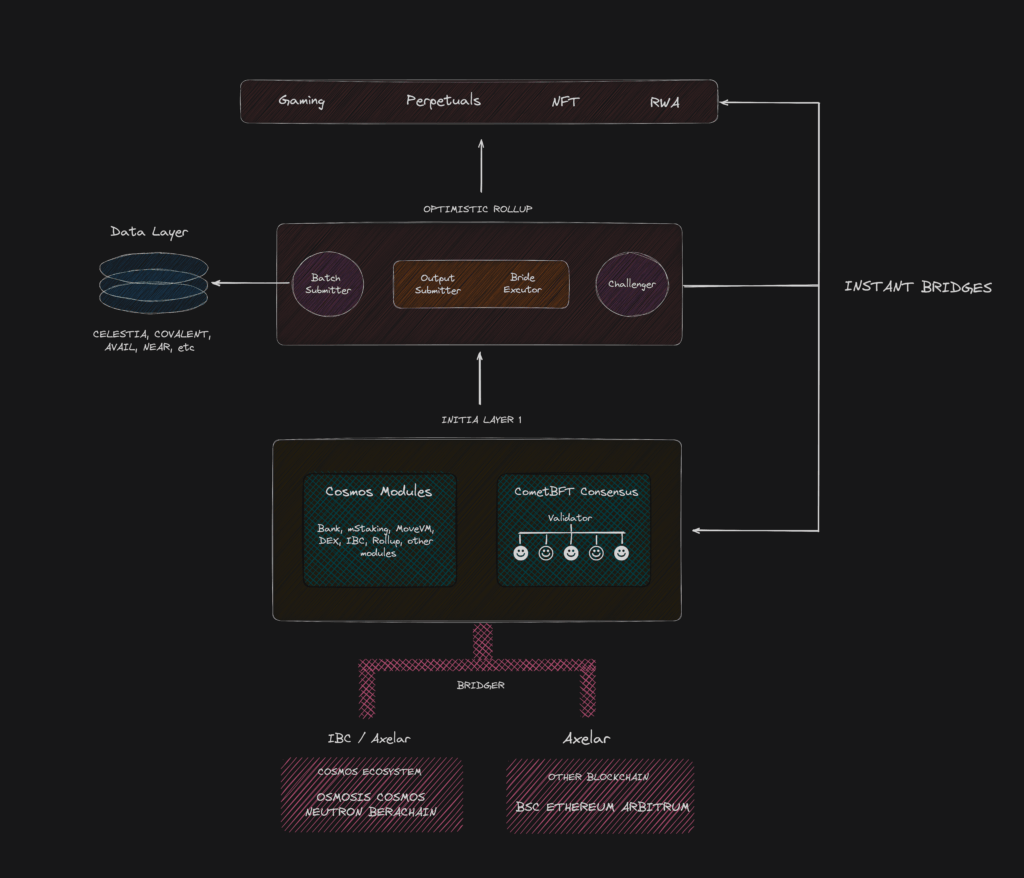
Looking at this chart, you might not understand much, so let me explain it in the simplest way, and then you can look back at the chart (from the bottom up).
Do you have USDC on Arbitrum and want to experience Initia?
- Sending USDC from Arbitrum to Initia Layer 1:
- First, you use a bridge like Axelar to transfer USDC from Arbitrum to Initia Layer 1.
- First, you use a bridge like Axelar to transfer USDC from Arbitrum to Initia Layer 1.
- Transaction Confirmation on Initia Layer 1:
- After USDC has been transferred to Initia Layer 1, the CometBFT system will confirm this transaction.
- CometBFT is Initia’s consensus mechanism, ensuring your transaction is recorded securely and accurately on Initia’s blockchain.
- Interacting with Cosmos Modules:
- On Initia Layer 1, you can leverage Cosmos modules like Bank to manage your USDC.
- You can perform operations like staking and moving through other modules like DEX to prepare for your USDC transactions.
- Data Recorded on Data Layer:
- The Data Layer includes services like Celestia, Covalent, Avail, NEAR, etc.
- When your transaction is recorded on Initia, related data will be stored and managed by the Data Layer. This ensures your transaction data can be accessed and verified transparently and reliably.
- The services in the Data Layer also support the retrieval and provision of data for decentralized applications (dApps) on Initia.
- Using USDC on Dapps like Dex, Gaming, RWA, Future Trading 👀
- Finally, you use your USDC to participate in dApps on Initia.
- These dApps are located at the top layer of the diagram and may include applications related to Gaming, Perpetuals, NFT, and Real World Assets (RWA).
- You can trade USDC with other assets or engage in other financial activities on Initia.
From such a complex diagram, it can be seen that every transaction is deployed very quickly with a 1.4 seconds of blocktime. That’s a blink of an eye 🦄.
As a Validator who has experienced quite a few different blockchains, I still feel impressed with Initia’s blocktime. It is really fast and rarely encounters errors. After reviewing Initia’s technical mechanisms, I can summarize the basic operating model of Initia, which includes four components:
Initia Orchestration Layer (Layer 1):
Simply called “Initia,” this is the base blockchain layer coordinating network security, consensus, governance, interoperability, liquidity, and interchain communication.
Initia Rollups (Layer 2):
They call it Minitia (Mini-initia), these are Layer 2 solutions built on the Initia base chain to enhance scalability and transaction processing speed. They can operate on EVM, MoveVM, or WasmVM with CosmosSDK.
Initia Optimistic Rollup Framework (OPinit Stack):
OPinit Stack is Initia’s OR framework, built within the CosmosSDK and used to secure Initia Rollups through fraud proofs and recovery.
Initia Middleware / Bridge:
Includes the Inter-Blockchain Communication (IBC) protocol and TBA Bridge Provider, facilitating seamless asset and data transfer between different blockchain networks and between Layer 1 and Layer 2 within Omnitia.
And all these seamlessly integrated technologies are collectively called: OMNITIA.
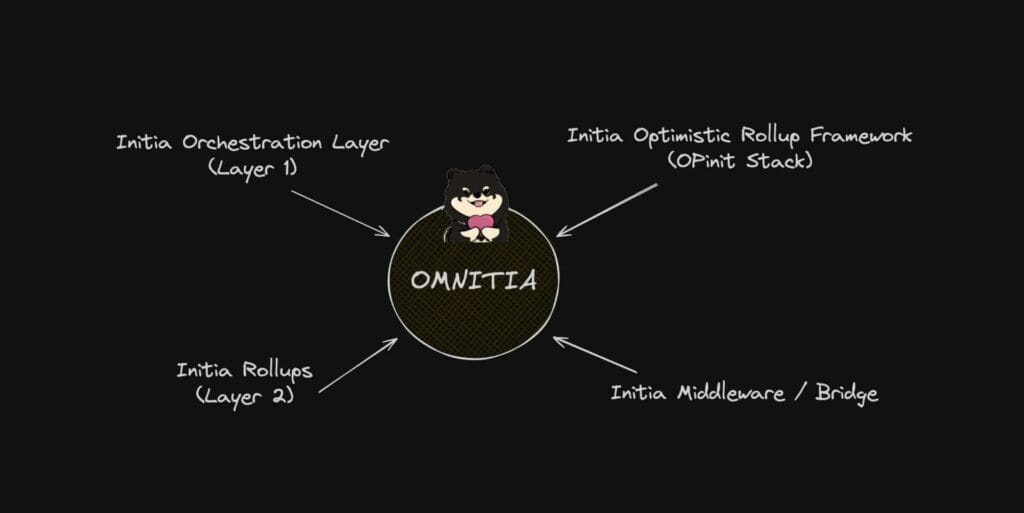
You don’t need to remember too much about the technology, just know that the technology Initia uses is collectively called Omnitia (it’s a combination of Bridge, Optimistic Rollup, Layer 1 & Layer 2). You didn’t hear wrong, it all lies within a single blockchain.
This is the most distinctive feature I highly appreciate about Initia. The seamless experience is based on the most powerful technologies currently available. This gives Initia a non-fragmented ecosystem, especially with the key components that make up a stable and scalable ecosystem.
Layer 2 is seamlessly integrated within Initia, making platform expansion and transaction processing fast. We will see fewer bottlenecks (in practice, with millions of transactions during the testnet phase, I didn’t encounter any issues showing the network being congested). Moreover, as a Validator of Initia, I have also monitored the logs regularly and found it to be very stable.
That is an overview of Initia. I will have a more in-depth series on Initia’s technology, where I will analyze more about Initia (Layer 1) and Minitia (Layer 2).
How is the experience on Initia?
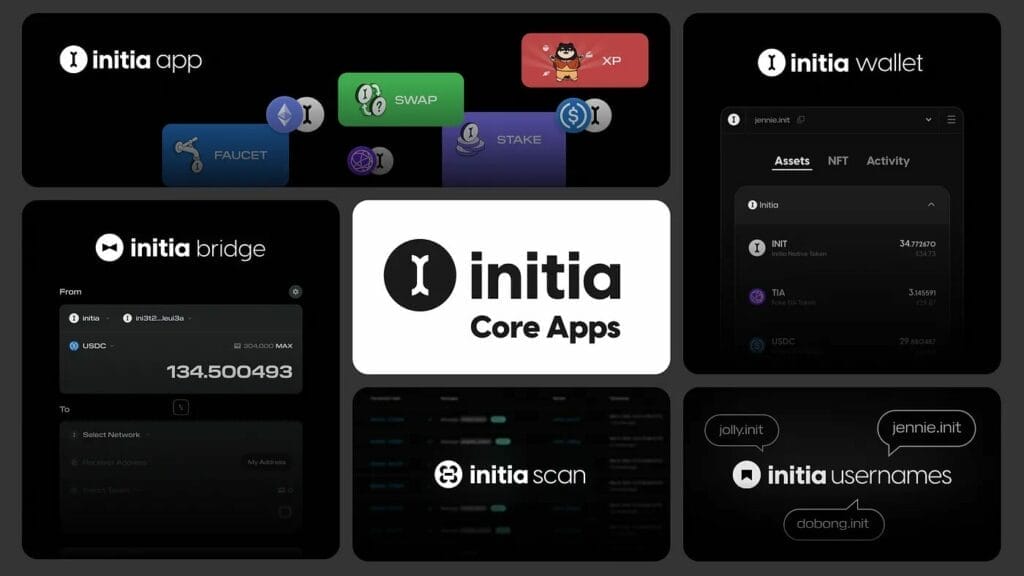
Initia has deployed the main core apps on its ecosystem, including:
- Initia Wallet
- Initia Bridge
- Initia Scan
- Initia Usernames
- Initia App (including functions like Faucet, Swap, Staking, XP – a pretty interesting pet game on Initia)
Initia’s criteria are that everything must work stably and the user experience must be simple. Let’s see what you recognize from the image below:
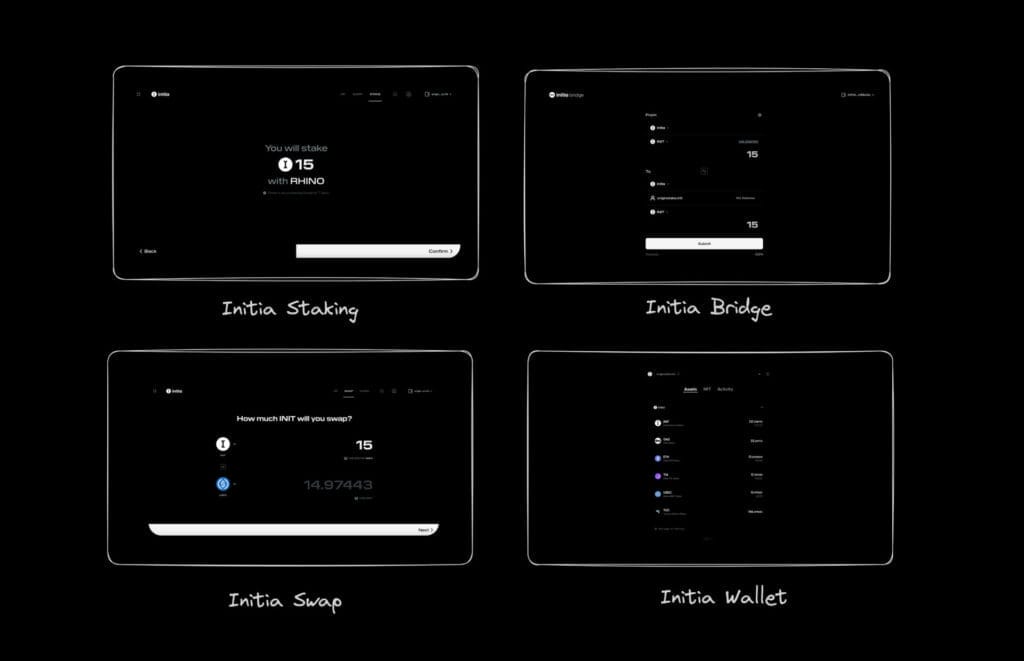
As can be seen, Initia has made the experience on its blockchain simple and accessible. I didn’t spend much time getting used to this ecosystem (under 30 seconds). When operating on any blockchain, the dapps you interact with the most are Wallet, Swap, Staking & Bridge. These are also the gateways to access Initia if you come from another ecosystem or are entirely new, so they need to be synchronized, easy to operate, and take no more than a minute to understand what to do. In any Initia dapp, you only need 2 to 3 steps to complete staking, swapping tokens, or transferring tokens to another blockchain.
This is a good experience that I feel deserves a 10/10 score for the UI/UX team. If Initia’s Founder accidentally reads this article, you might consider giving the UI/UX team a raise 👀
Modern technology, great user experience, but what about the community?
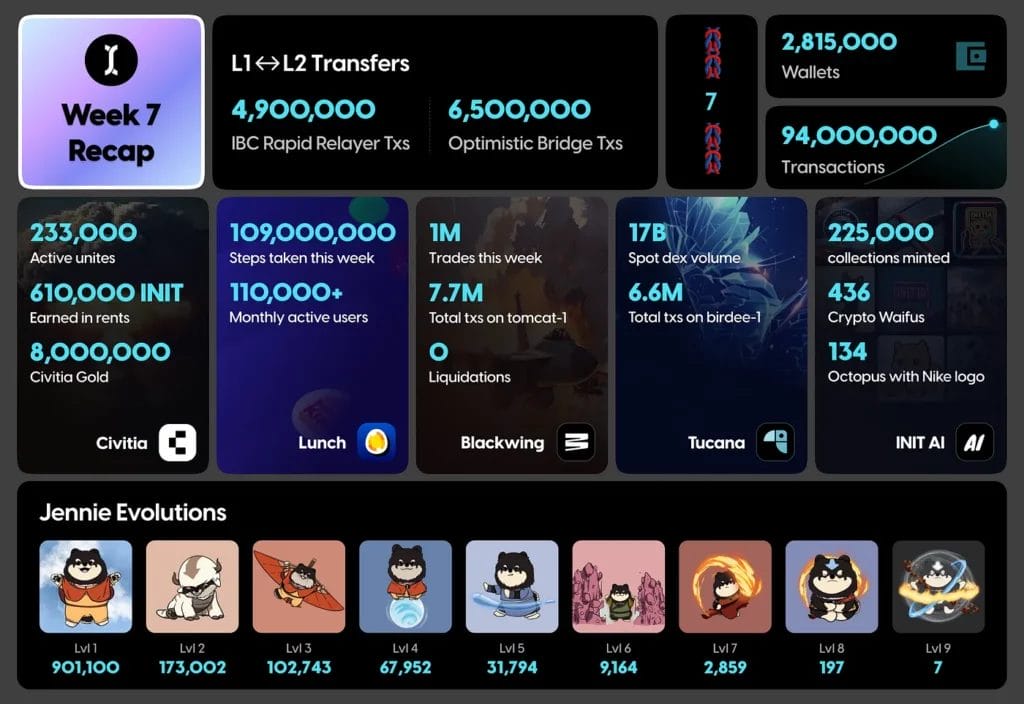
With impressive metrics such as:
- 94,000,000 Transactions
- 2,815,000 Wallets
- 6,500,000 Optimistic Bridge
- 1,000,000 Jennie baby on the network
- …
These numbers show the strong current activity on Initia, with the community being extremely active even during the Testnet phase. These impressive metrics are thanks to the Omnitia infrastructure. I believe these numbers show that the community is responding very well to Initia. Besides the excellent technical infrastructure, their way of communicating with the community through minigame campaigns on Discord/Twitter, regular technical updates, the nurturing of Jennie, and their quick response to questions and feedback from the Discord community demonstrate that, in addition to technical excellence, Initia also has a very good marketing and communication team. Applause for jessie.init & mista.init 👏🏻
Moreover, as a Validator, the OriginStake team has participated in 3 highly competitive Testnet phases. We had quick access to documents and technical support from the Initia team. They have a comprehensive documentation portal that can help you get started quickly with descriptions of Initia’s infrastructure, technologies, node operation, APIs, etc. This is the official documentation from Initia: Welcome to Initia | Initia Docs. If you are a developer, you can start right away with this documentation.
During the testnet phase, I had very good experiences and was attracted to Initia not only in the role of a Validator but also as a real user experiencing the ecosystem. With the current technical advantages and a large, highly active user base, Initia is the next-generation blockchain deserving your attention and the WEB3 market.
To facilitate your participation in the Initia ecosystem, I will attach some official links:
- Initia.xyz: The official website of Initia
- Initia Twitter: The official Twitter of Initia
- Initia Discord: The official Discord of Initia
- InitiaScan: A multi-chain explorer with VM-specific tools and information.
- Wallet Widget: Supports EVM & Cosmos wallet signing and includes social login features.
- Initia Bridget: A frontend bridge/on-ramp aggregator integrated directly into rollups. (not yet launched)
- Initia App: A centralized platform for all things related to Initia.
- Initia Usernames: A blockchain-wide on-chain identity system.
- Initia Wallet: A dedicated wallet designed for navigating the expansive Initia ecosystem.
Remember, this is just an overview article about the Initia experience during the testnet phase. I will be back with a series on Initia (Layer 1) and Minitia (Layer 2). Seeya!!!
Do you want to follow this introverted guy? 🥹
My Twitter: Spir | OriginStake (@mrspirr) / X





